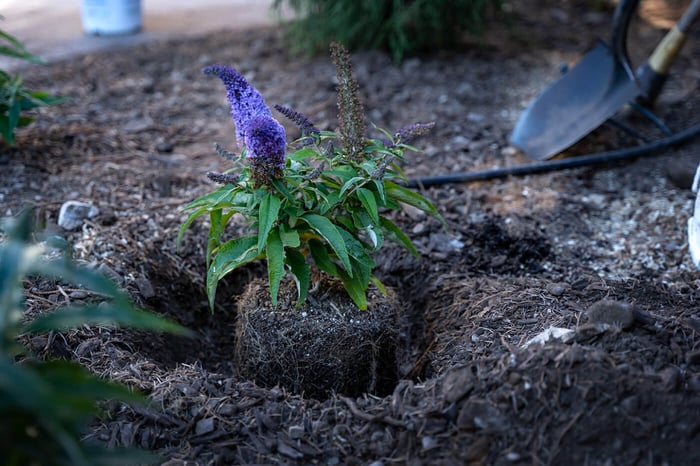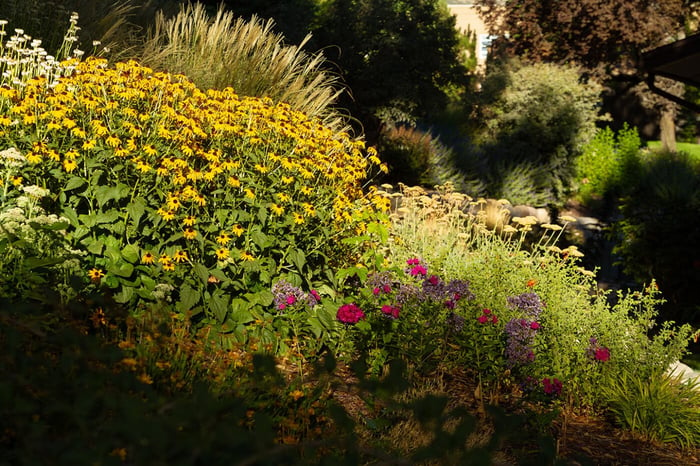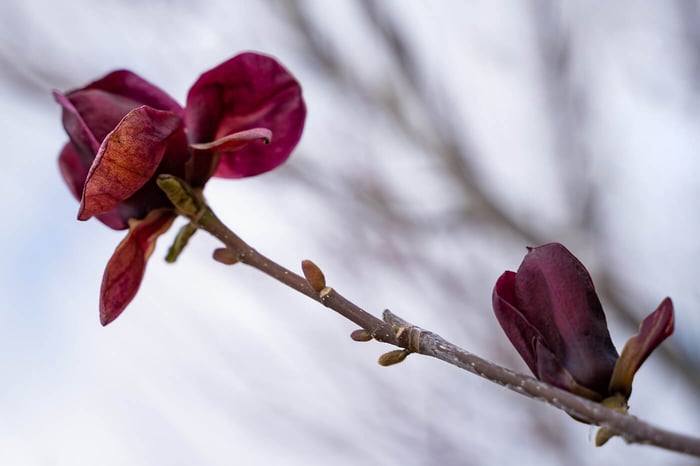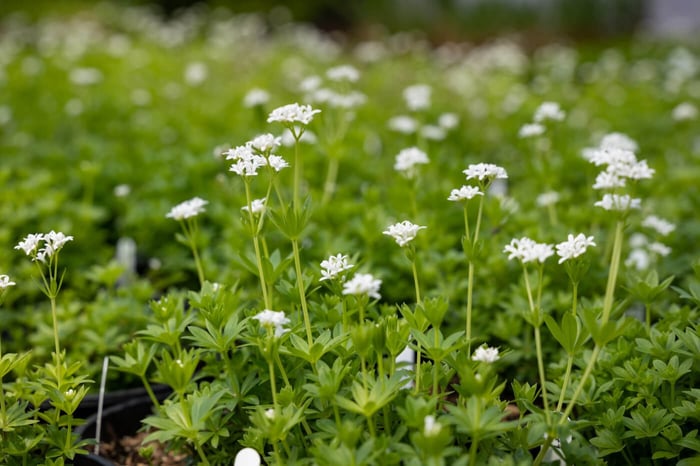Planting season is finally upon us. It’s time to update your landscape with trees, shrubs, and perennials. So, let's talk about something super basic. Should you amend your soil?
When you’re planting, it’s best to dig your hole twice as wide as your root ball or pot, and only as deep as the top of the root ball or the top of the soil in the nursery pot. That’s fairly common knowledge. But then what? Do you add amendments to your soil when you fill it back up?
Almost anywhere you look, you’ll find people encouraging you to amend the soil in your planting hole with organic matter or other additives in order to improve the structure and fertility of the soil, but is this really the best practice for your trees and shrubs? Professional landscaping crews don’t do that. In fact, in some situations, this practice can actually harm your plants.

A Happy Place for Weeds
Amending your soil will encourage the growth of weeds and other unwanted plants. These plants will compete with your trees, shrubs and perennials for nutrients and water, making it more difficult for them to thrive. But that’s far from the worst problem you can create by altering the soil around your root ball.
Disrupting Your Natural Soil Structure
One of the main reasons not to amend your soil in your planting hole is that it can disrupt the natural soil structure. Trees and shrubs that thrive here in Utah are adapted to our specific soil conditions. Adding organic matter or other amendments can change the pH levels and nutrient content of the soil, making it difficult for the roots to establish themselves. This leads to poor growth. In fact, some plants may even die because their soil was amended.
Eventually, any tree or shrub you plant will send roots far beyond your original planting hole. If the plant can’t handle native soil, you’ll need to amend it deeper and wider than is physically possible. The better solution is to plant things that can handle your soil from day one.

Water Damage
Adding organic matter or other additives to your soil as you backfill often leads to over-watering. Amended soil typically holds more moisture than native soil, which can cause the roots of your trees and shrubs to become waterlogged. This can lead to root rot, which can ultimately kill the plant. It’s especially problematic if you’re planting in heavy clay soil. The water you give your tree will drain through your amended soil, but when it reaches the native clay it will slow down, filling your original hole like a soup bowl. Your tree will sit in that soup until the water finally drains, soaking the roots for far too long.

Recognizing Water Damage
It takes a while for your plants to tell you they've had too much water. As their roots become damaged and waterlogged, the leaves will begin to turn yellow and fall off. Sometimes the leaves will dry out and fall off without changing colors. Even worse, the signs of too much water look nearly identical to the signs of inadequate water. Usually, homeowners see these symptoms and think their plant needs more water, when in reality, it needs less—much less. Whenever you see signs of stress in your plants, feel the soil before you add water. If it still feels damp, chances are, the problem is too much water, rather than not enough.
The best way to tell the difference between too much water and not enough water is to watch your plants. If they begin to wilt within a day or two, chances are good that it needs more water. If the signs of stress—limp, wilting, yellowing leaves, etc.—happen over several days or weeks, the issue is most likely too much water. Having too much water around your plants is much more difficult to remedy than having too little. We recommend that you hand water all of your new plants, watching them closely for heat stress, for the first three weeks or so. Then connect them to your drip system and continue to watch them until you’re confident they’re receiving the water they need for your location and soil conditions.

The Better Solution
Instead of amending the soil in your planting hole, we recommend that you plant your trees and shrubs in the native soil. This will help the roots to establish themselves more quickly and allow the tree or shrub to adapt to the local climate. This doesn’t mean you shouldn’t top dress your soil with mulch and fertilizer. Proper watering with drip irrigation, mulching, and fertilizing will help your plants to thrive.

Annuals and Vegetables
One significant exception to this rule is annuals (and vegetables)—plants that thrive for a season and die in the fall and winter. These plants are often native to other regions of the world. Many plants that are annuals in Utah would be perennials in other climates. These plants often require moist, well structured soil that holds water and drains easily. Annuals typically don’t grow extensive root systems in just one season, so their roots won't extend far beyond the area that you amend. Because amended soil holds water longer than our native soil, the annual plants in your planter beds will feel more at home in amended soil. Just remember, annuals are the exception. The native and adapted trees, shrubs, and perennials that thrive in Utah’s landscapes will grow much better in our native soil.
If you have questions about best practices when planting, contact your local nursery or the Utah State agricultural extension service. You can also call, text or email Progressive Plants. Our team of plant experts is always eager to share their knowledge with you. In fact, you can chat with us here on our website any time.






